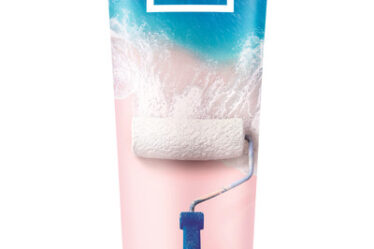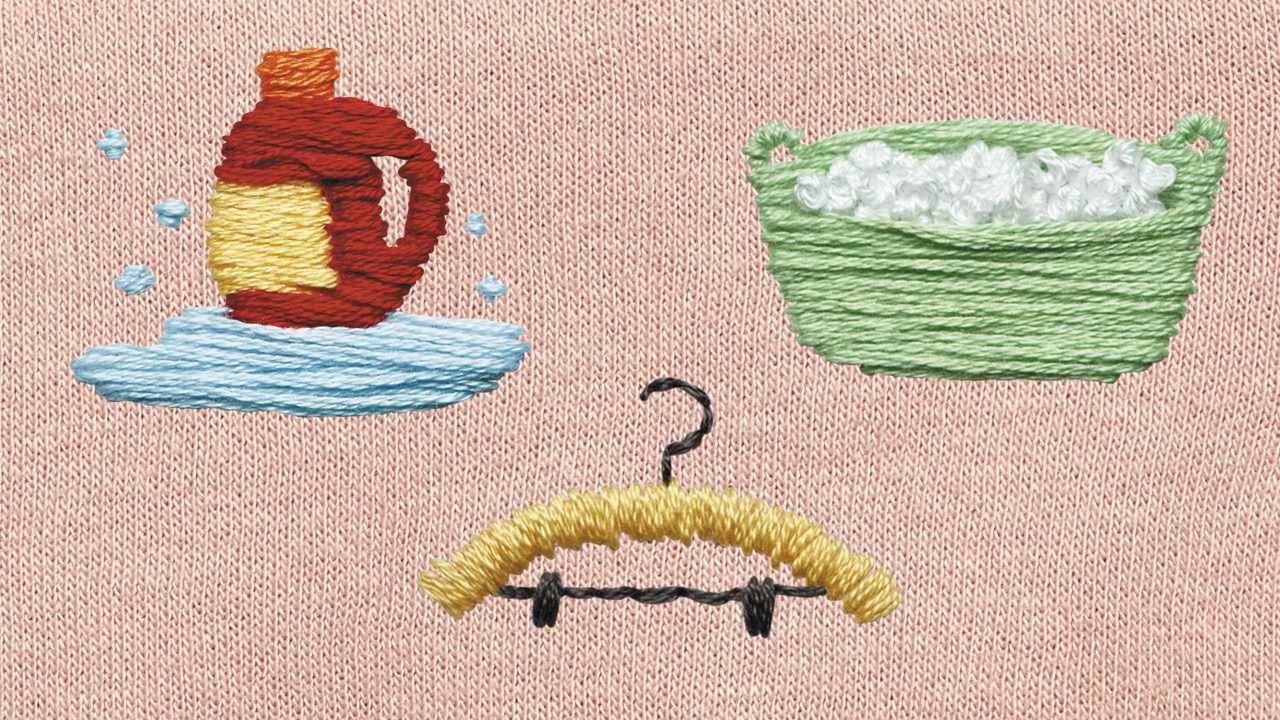
A gentler touch is the first step toward giving your garments a longer life.
(Embroidery illustration: Ashley Wong; Photography: Erik Putz)
Do your clothes wear out faster than they should? It may be time to consider tweaking your laundry routine. Below, experts share seven things you can do to keep your closet looking—and smelling—fresh.
1. Wash it less
“One of the things that wears clothes out the fastest is the abrasion from the washing machine, where clothes rub against one another,” says Patric Richardson, a laundry expert and author of Laundry Love: Finding Joy in a Common Chore.
The truth is that not everything needs to be washed after every single wear. Jacqueline Sava, an avid sewer and the founder of Soak Wash, an eco-friendly line of laundry soap made in Canada, agrees. That sweater you wore once with a T-shirt underneath? It has plenty of wears left. A T-shirt is fine for another wear if you’ve had a particularly chill day. Levi’s CEO Chip Bergh famously never washes his jeans and only spot cleans them as needed to prevent them from fading and losing their shape.
Skipping laundry day isn’t just great for your clothes, but also for the environment. The agitation of the wash cycle sheds microplastics (from synthetic fabrics like nylon and polyester), which then enter the ecosystem through waste water and end up in our food chain.
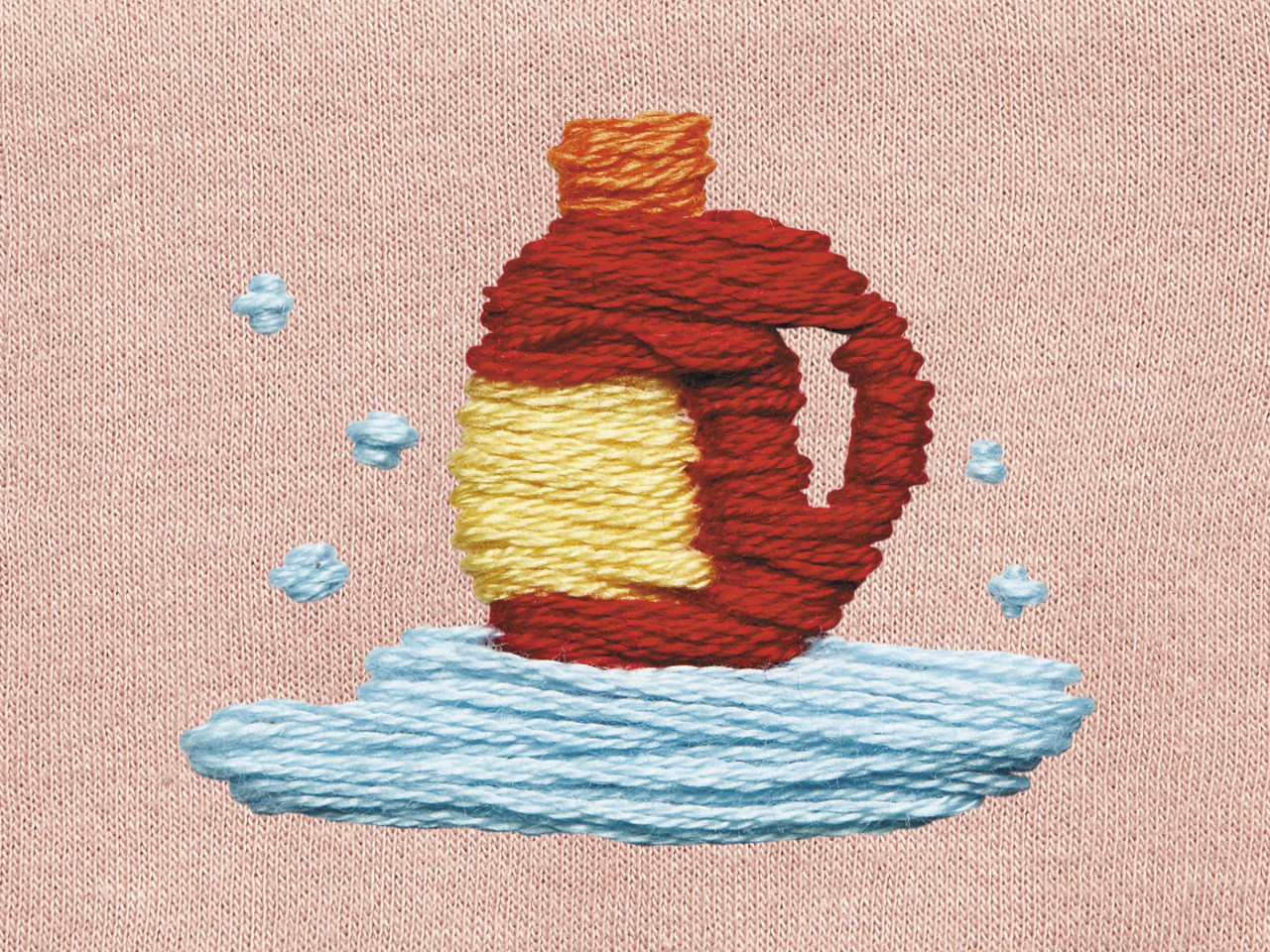
(Embroidery illustration: Ashley Wong; Photography: Erik Putz)
2. Hold the suds
According to Richardson, the most common mistake people make is using too much detergent, which builds up on clothing over time and shortens its lifespan without leaving it any cleaner. He says you actually only need two tablespoons for a full load—something Big Laundry doesn’t want you to know.
“Regular all-purpose detergents are meant to be effective on hockey uniforms and work shirts,” he explains. Most people don’t need their formulas to work that hard. “Use something gentler for all of your clothes. If you need something more aggressive, you can adjust from there,” he adds, noting that adding baking soda to a delicate detergent is often enough to neutralize odours.
Not ready to quit your heavy-duty suds quite yet? Sava says a delicate detergent (like the one from her own brand) is ideal to refresh clothing that’s only been lightly worn.
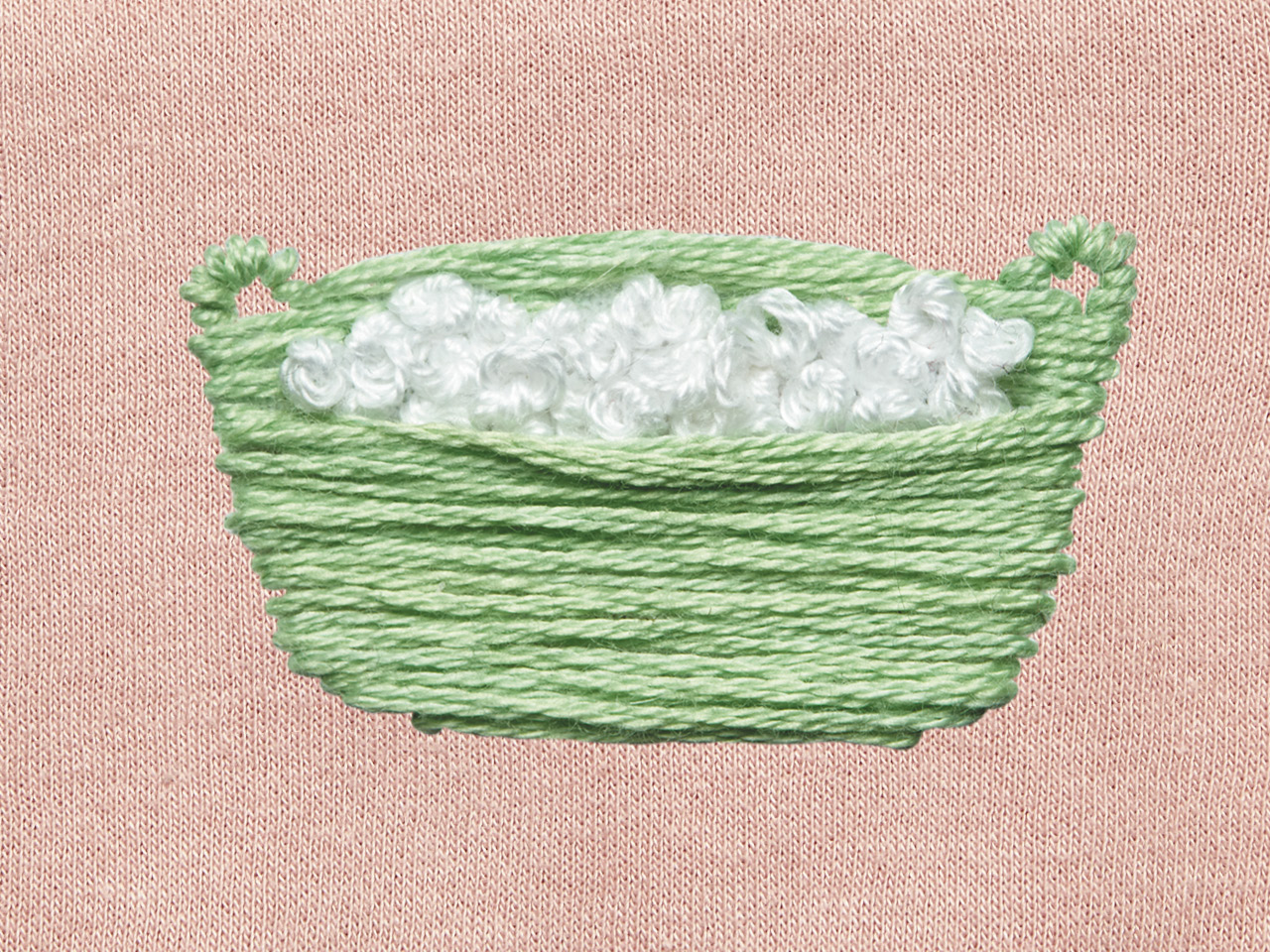
(Embroidery illustration: Ashley Wong; Photography: Erik Putz)
3. Handle with care
Learning to read care-label instructions is crucial, especially for anything with lace, embroidery or sequins. (See our handy chart, below, for more info.) “If you’re unsure, wash it by hand in a sink or basin, and skip the dryer,” recommends Sava. Richardson swears by mesh wash bags, which act as buffers to prevent friction and keep clothing from becoming tangled. Pro tip: Only put one item into each bag, and use the smallest size available to prevent rubbing.
4. Keep your cool
Heat wears down fibres over time, so avoid hot water and hang things to dry whenever possible. Not using the tumble dryer is also great for the planet: Each load in a vented dryer creates about 2.4 kilograms of carbon emissions. When using the dryer, keep an eye on your load. Dry fabric rubs against itself as it tumbles, causing damage. “The trick is to never overdry,” says Richardson. “If you’re going to put things in the dryer, open the door and pull out what’s dry every few minutes.”
5. Have a ball
Dryer balls are a gentler alternative to dryer sheets, which work by coating clothing in a softening agent that compromises the breathability and wicking properties of the fabric. They’re also cheaper and help clothes dry faster. To get that fresh-out-of-the-dryer scent, Richardson recommends adding a couple of drops of essential oil to wool balls prior to drying.
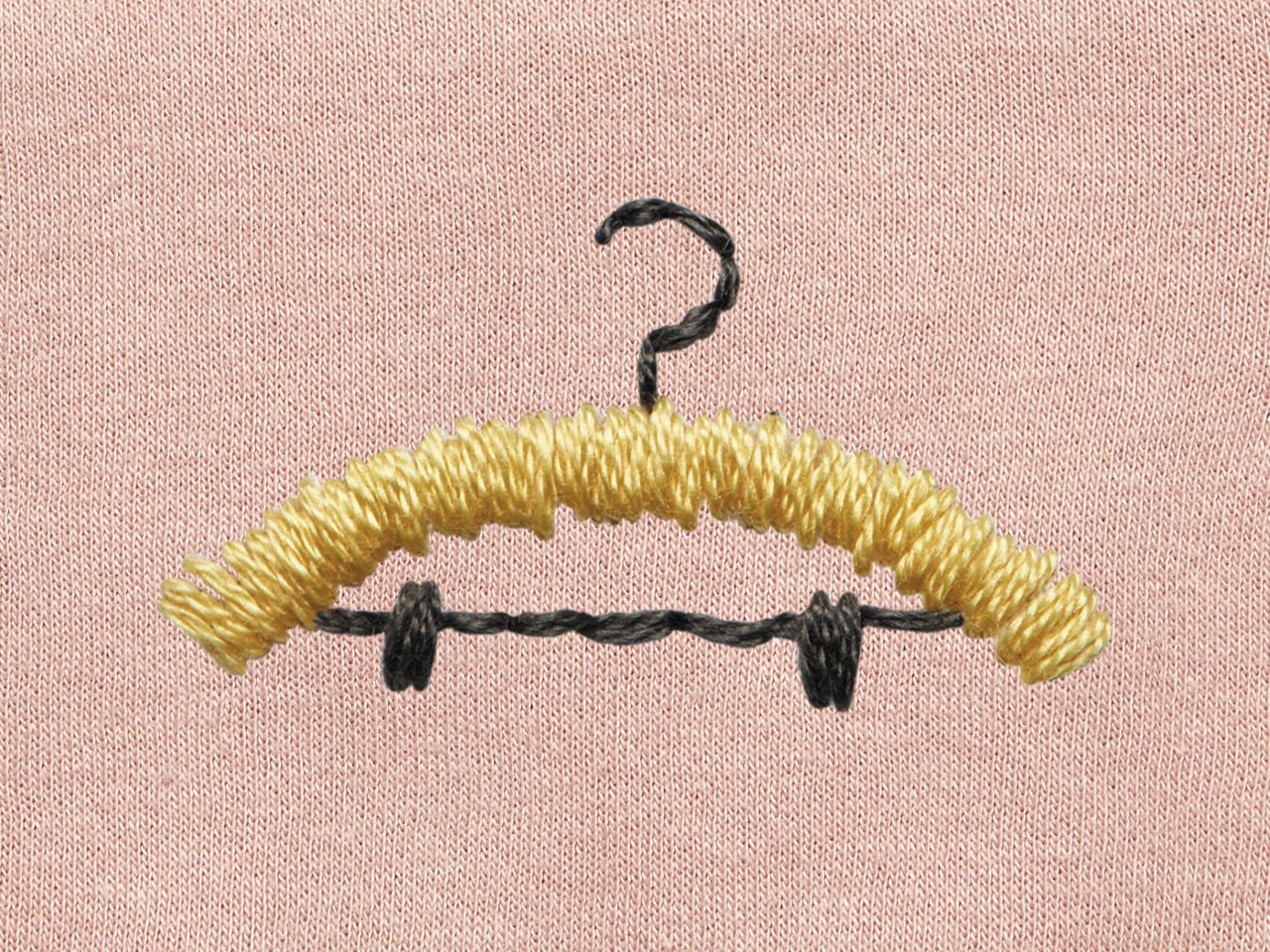
(Embroidery illustration: Ashley Wong; Photography: Erik Putz)
6. Get the hang of it
To keep the weight of the water from stretching out heavy fabrics as they air-dry, Richardson recommends using the express cycle with a fast spin to wring out as much liquid as possible from clothes. Then lay them to dry over the top of a drying rack. If that’s not an option or if you’re handwashing, lay a few towels down and place the garment on top to dry flat. This also works for anything that might lose its shape as it dries. “You don’t want the weight of the water to pull on the garment,” says Sava. When putting wet clothes on hangers, opt for thicker wooden or padded ones over wire, as they won’t warp the fabric. (FYI, knits should never be dried on hangers.)
7. Hit refresh
It’s normal for well-worn clothing to pill and fade. Clothes, particularly knits, tend to pill where friction occurs and breaks down fibres, like in the armpits, over the elbows and on the stomach. To smooth out pilled pieces, invest in a fabric shaver, or use a pumice stone, which is gentler and Richardson’s go-to. If an item is so faded that it’s been relegated to the back of your closet, it’s also worth considering dyeing it a bold new colour.



